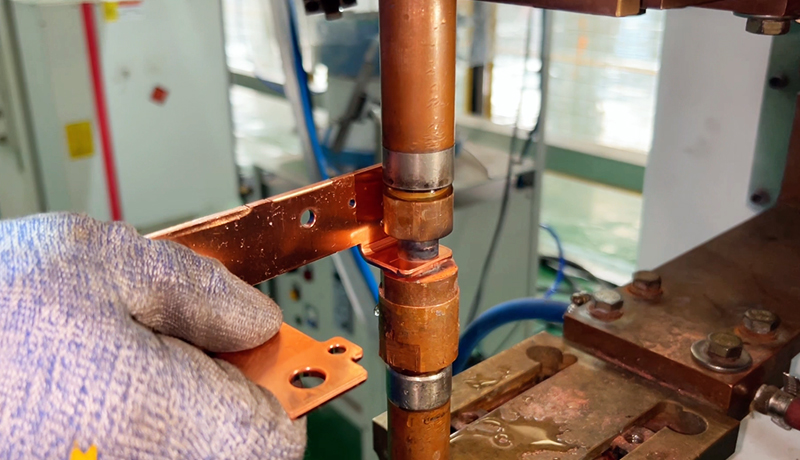How to Weld Copper Alloys with Resistance Spot Welding
Resistance welding is a widely used method of joining a variety of metals, including copper alloys. The technology relies on heat generated by electrical resistance to form strong, durable welds. There are many ways to weld copper, but you may have rarely heard of using a spot welding machine to weld copper alloys. In this article, we will explore the process of resistance spot welding copper alloys and discuss the key steps involved.
Material preparation
First, prepare the copper alloy material to be welded. Due to the particularity of spot welding, the shape of the material cannot be a strange shape such as a pipe. It is best to prepare a 1-3 mm thick plate.
Material cleaning
Before starting the welding process, you must ensure that the copper alloy pieces to be joined are clean and free of contaminants. Any surface impurities will negatively affect the quality of the weld. Cleaning is usually done with a wire brush or chemical solvent.
Electrode selection
Electrode selection in resistance spot welding is crucial. Electrodes should be made of materials capable of withstanding the high temperatures generated during welding. Copper electrodes have excellent conductivity and durability. We usually use copper electrodes to weld copper alloys.
Set welding parameters
Properly setting the welding parameters is critical to successful welding. Parameters to consider include:
Welding current: The amount of current applied during the welding process.
Welding time: The duration of applied current.
Electrode force: The pressure exerted by the electrode on the workpiece.
The specific values of these parameters will depend on the thickness and composition of the copper alloy being welded.
Welding process
Once the welding parameters are set, the actual welding process can begin. It should be noted that when welding copper alloys, we generally add solder between the two contact points. When welding, the workpiece to which the solder is added is positioned between the electrodes to ensure good electrical contact. When welding current is applied, the resistance at the contact points generates heat, causing the copper alloy and solder metal to melt and fuse together. Electrode force ensures correct contact and helps shape the weld.
Cooling and inspection
After welding, the weld must be allowed to cool naturally or controlled cooling methods must be used to prevent the formation of defects. After cooling, the weld should be inspected for quality. This includes checking for cracks, porosity and proper fusion. If any defects are detected, the weld may need to be repaired or redone.
In summary, when done correctly, resistance spot welding is a very effective method of joining copper alloys. By following the above steps and carefully controlling the welding parameters, strong and reliable welds can be formed in copper alloys, making this technique a valuable tool in various industries that use copper alloys.
